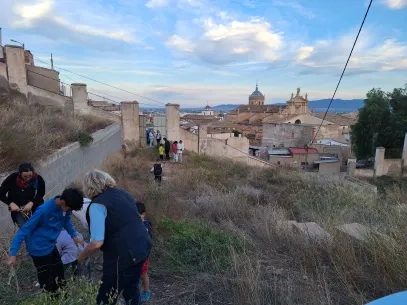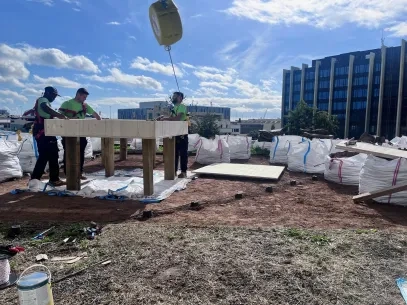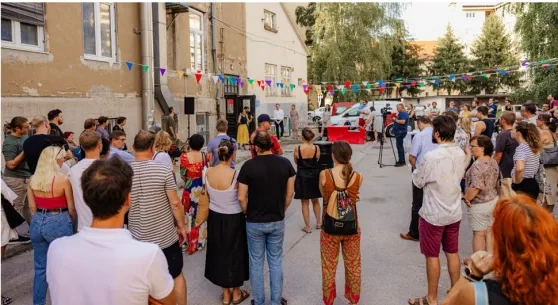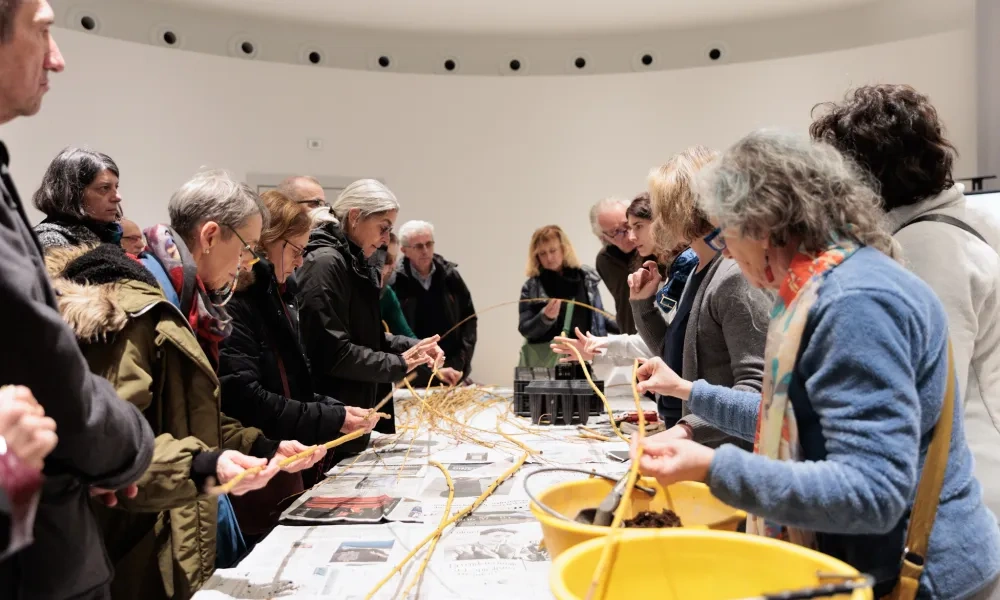
TALEA is, first of all, an urban greening project, as the name itself suggests. In Italian, the word refers to the propagation technique where a branch is taken from a mother plant and, with some care, replanted in the ground to become a new, independent plant. The Innovative Action TALEA project aims to spread vegetation across urban areas of Bologna, transforming them into spaces better equipped to withstand prolonged summer heatwaves, especially in neighbourhoods with more vulnerable social groups.
Extreme temperatures in the city
If there is one climate indicator that breaks records every year, it is temperature. Global warming in 2025 is estimated at around 1.4°C above pre-industrial levels, and the Mediterranean region is among those experiencing the fastest increases. Urban areas are particularly vulnerable to the consequences of rising temperatures, not only because of the high density of materials and activities that trap, generate, and release heat, but also due to the large number of people and assets exposed to these conditions.
Indicators published by the Italian government show how urban climates have changed. In 2024, for example, there were 52 days with extreme heat, defined as temperatures above 35°C, which is twice as many as the 1991–2000 reference decade. Nighttime temperatures are particularly effective in describing the urban heat island effect. Artificial surfaces in cities absorb and retain heat during the day, which is then released into the urban environment at night. Combined with other factors such as the heat expelled by air conditioning external units, this contributes to keeping nighttime temperatures high. In 2024, there were 36 nights when the minimum temperature stayed above 25°C, compared to just 7 in the reference decade. When nights fail to cool the city, the following days are affected as well, creating a persistent urban heat microclimate. As temperature and humidity combine and place stress on the human body, the consequences can become severe. The indicator that captures these conditions is called extreme thermal discomfort. In 2024, this was recorded on 53 days, again almost double the previous decade’s average.
Image
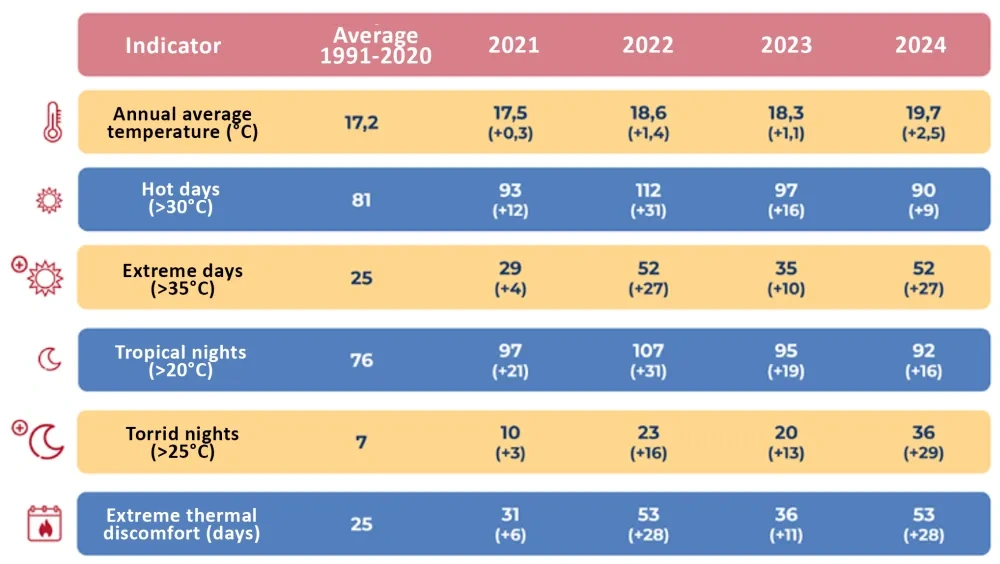
Principal heat indicators for Italian urban environments. Source: Italian Ministry of Health

Although 2024 was a particularly hot year, the long-term climate trends are clear, and future projections for Italy leave no doubt. Bologna lies in the Po Valley, one of the most urbanized regions in Europe. Due to its geography and climate, it is among the Italian cities with the highest levels of thermal discomfort. The summer of 2025 began with scorching days that triggered the highest heat alert level, known as red alert, issued by the national civil protection authority. Bologna experienced ten consecutive red alert days, from June 26 to July 6. During such days, staying outdoors in direct sunlight is strongly discouraged for seven hours in a row. People are urged to spend part of the day in air-conditioned indoor spaces to allow the body to recover and avoid stress.
While climate trends do not promise improvement, there is a lot that can be done to make Bologna more livable during heatwaves. A recent study published in Nature Medicine (Gallo et al., 2024) shows how adapting to climate change plays a role in protecting public health. If similar heatwaves had occurred in the year 2000, they would have resulted in twice as many deaths. This means that compared to the start of the century, we are much better equipped to face extreme heat, even as it becomes more intense. We are adapting, and the measures implemented so far, mainly public information campaigns, heat bulletins, and early warning systems, have had a positive impact. Alongside behavioral measures, there is room to go further by adopting technological, infrastructural, nature-based, and social measures. This is where TALEA comes in.
Image
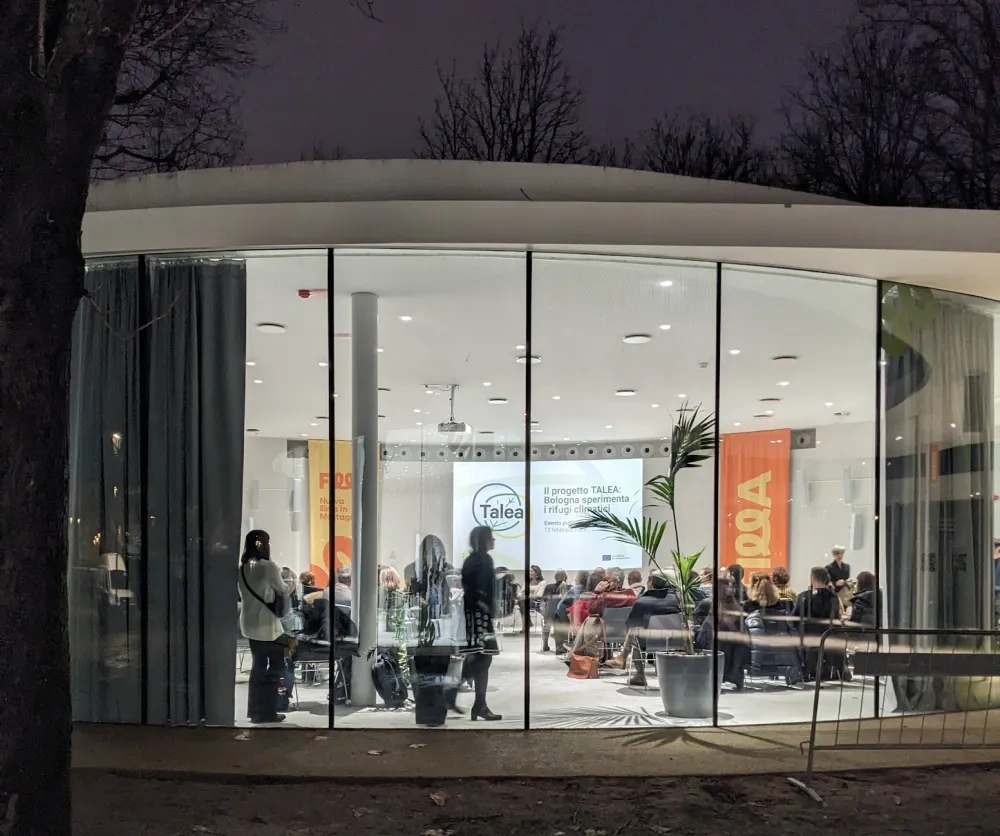
Citizens participate in TALEA's first public event, in the Filla pavilion inside one of the city's most famous parks.

Climate shelters for citizens: the innovation of TALEA
Launched in December 2024, TALEA is now developing several components of its urban innovation strategy, blending physical transformation, digital tools, and community participation.
On the ground, the project is targeting five urban or peri-urban cells, each 100 by 100 meters, to be transformed into three climate shelters. These are spaces designed to offer improved microclimatic conditions during the most intense heatwaves (Roversi & Longo, 2025). The interventions aim to reduce the amplifying effect of built-up materials that store heat, replacing them with nature-based solutions (NBS) that can deliver a wide range of benefits. Chief among them is greater thermal comfort. A recent study (Maccabiani et al., 2024) examined Bologna using a model that identifies which parts of the city already provide this kind of benefit. The research developed a specific climate shelter index, which takes into account typical parameters like surface temperatures, green coverage, and size, as well as accessibility and the presence of services.
In addition to data and analysis of the physical environment, TALEA also considers the city’s social fabric to understand where interventions are most needed, and for whom. The project makes use of a rich data set collected and processed by the Municipality of Bologna on demographic, economic, and social fragility. This knowledge helps to pinpoint areas with the highest incidence of vulnerable groups and identify how to reduce their exposure to heat-related risks.
This range of data enables TALEA to apply digital tools that simulate urban conditions and evaluate different combinations of interventions. These tools will also support citizen science activities, which aim to both raise awareness and collect real-time data. The data and findings will feed into Bologna’s Digital Twin, increasing the impact, scalability, and integration of the project while supporting informed decisions for urban spaces.
While data-driven technologies support the process, they do not make decisions. In a region where public life is so central that even elderly residents watching roadworks have earned their own nickname, involving residents from the target neighbourhoods is a core part of the project. Citizens will help decide which of the available cells to select, how to combine them, and what features the new spaces should include. Certain technical constraints must still be respected, but the participatory process is designed to give a voice to future users, to build a sense of ownership and strengthen community ties. Local stakeholders are also involved with the goal of including them in the future co-management of activities within the transformed areas.
Image
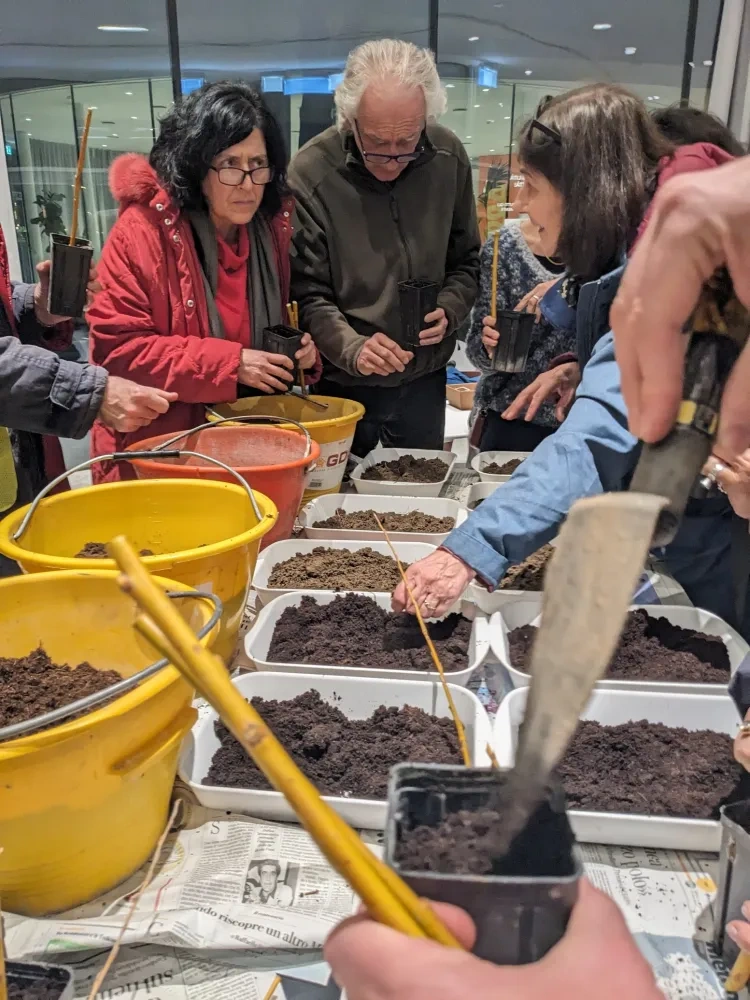
Citizens getting their hands dirty in the opening workshop of vegetation propagation

Engagement and participation
The project’s launch event was held in a new public facility inside Parco della Montagnola, one of the urban areas in Bologna with the highest climate shelter index. The cities selected to replicate TALEA's innovations also participated in this event, starting the peer-to-peer process of mutual learning. The first cities to follow in Bologna's footsteps are Marseille (France), Riga (Latvia) and Cluj-Napoca (Romania). Many residents attended and were immediately invited to get their hands dirty—quite literally. A propagation workshop taught them how to care for fresh willow cuttings and prepare them to become new plants. Participants left the February workshop carrying a future plant in their hands, ready for summer. TALEA will revegetate parts of the city, but in the meantime it has already brought some greenery into people’s homes.
TALEA offers a concrete example of how urban adaptation can extend beyond behavioral measures. It weaves together technological tools, physical infrastructure, nature-based design, and social engagement. The project uses advanced digital tools and detailed modeling to select targeted and effective interventions. It invests in the physical transformation of public space through nature-based solutions. It builds strong links with the local community to direct actions where they are most needed. And it values citizen participation as a driving force for change and care. TALEA shows that adaptation is not just a technical response. It is also a way to regenerate urban spaces and relationships, producing long-lasting, widespread benefits.
About this resource
The European Urban Initiative is an essential tool of the urban dimension of Cohesion Policy for the 2021-2027 programming period. The initiative established by the European Union supports cities of all sizes, to build their capacity and knowledge, to support innovation and develop transferable and scalable innovative solutions to urban challenges of EU relevance.
Similar content
